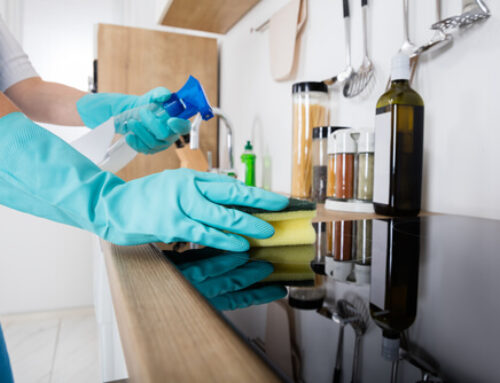Are you ready to transform your living space into a fresh and revitalized haven? Deep cleaning your home is the answer. Whether you’re preparing for a special occasion or tackling seasonal cleaning, our comprehensive guide will provide you with all the necessary steps to achieve a spotless and rejuvenated living environment.
Introduction
Maintaining a clean home goes beyond regular surface cleaning. Deep cleaning involves reaching neglected areas and eliminating hidden dirt, dust, and grime that accumulate over time. The benefits are twofold: a cleaner and healthier home, and a sense of satisfaction that comes with a refreshed living space.
Preparing for Deep Cleaning
Before diving into the deep cleaning process, it’s essential to gather all the necessary supplies and plan your cleaning schedule. Creating a checklist of cleaning tools, such as microfiber cloths, brushes, and cleaning solutions, will ensure you have everything you need at hand. Additionally, organizing your schedule and allocating specific time slots for each task will help you stay focused and efficient.
Room-by-Room Deep Cleaning
To achieve a thorough deep cleaning, it’s crucial to tackle each room individually, paying attention to the specific cleaning requirements of different spaces.
Kitchen
The kitchen, often the heart of a home, deserves special attention during deep cleaning. Start by clearing out your pantry and refrigerator, disposing of expired items, and organizing the remaining ingredients. Then, move on to deep cleaning appliances like the oven, microwave, and refrigerator, ensuring they are free of dirt, grease, and food residues. Don’t forget to wipe down countertops, cabinets, and backsplashes for a gleaming finish.
Living Room
Your living room is where you relax and entertain guests, so it’s essential to create a clean and inviting atmosphere. Begin by dusting and vacuuming all furniture, including sofas, chairs, and tables. Pay special attention to hard-to-reach areas, such as under furniture and in between cushions. If you have carpets, give them a thorough cleaning using a vacuum cleaner or a steam cleaner. For curtains and upholstery, follow the manufacturer’s instructions to ensure they are cleaned properly.
Bedrooms
Deep cleaning your bedrooms will contribute to a peaceful and hygienic sleeping environment. Start by laundering bedding, pillows, and cushion covers. While these items are in the wash, dust and clean all surfaces, including nightstands, dressers, and mirrors. Don’t forget to vacuum the floors and wash any rugs or carpets.
Bathrooms
Bathrooms are high-traffic areas that require extra attention during deep cleaning. Scrub tiles and grout lines using a suitable cleaner, paying close attention to corners and crevices. Clean toilets, sinks, and mirrors using appropriate cleaning products. Finally, don’t forget to launder bath mats and shower curtains for a fresh and hygienic feel.
Tackling Neglected Areas
Deep cleaning is an excellent opportunity to address neglected areas in your home that often accumulate dust and clutter over time.
Attic and Basement
The attic and basement are commonly used as storage spaces, but they can quickly become cluttered and dusty. Start by removing unnecessary items and organizing the remaining belongings. Dust and wipe down surfaces, and clean windows to allow natural light to shine through. Additionally, ensure proper ventilation to prevent mold and musty odors.
Garage
Your garage may have become a catch-all for tools, sports equipment, and various household items. Take this opportunity to declutter and organize the space. Sort through your belongings, donate or discard what you no longer need, and arrange the remaining items neatly. Sweep and mop the floor for a clean and tidy garage.
Refreshing the Air Quality
In addition to cleaning surfaces and removing dirt, it’s important to improve the air quality in your home. Open windows and doors to allow fresh air to circulate and reduce indoor pollutants. Consider using natural air fresheners or air purifiers to eliminate odors and create a pleasant environment.
Safety Precautions
While deep cleaning your home, it’s crucial to prioritize safety. Wear gloves, masks, and other protective gear to prevent skin irritation and inhalation of cleaning product fumes. Ensure that cleaning products are stored securely, out of reach of children and pets.
Tips for Efficient Deep Cleaning
To make the most of your deep cleaning efforts, consider the following tips:
- Start from top to bottom: Begin cleaning higher surfaces like ceilings, fans, and light fixtures before moving on to lower areas.
- Clean systematically: Work in a logical order, moving clockwise or from left to right in each room. This will help you avoid missing any spots.
- Break it down: Tackle one task at a time, focusing on completion rather than feeling overwhelmed by the entire cleaning process.
Maintaining a Clean Home
After deep cleaning your home, it’s important to establish a regular cleaning routine to keep your space looking its best. Implement quick cleaning habits such as wiping down surfaces daily, doing small loads of laundry regularly, and decluttering as you go. By incorporating these habits into your daily life, you’ll find that maintaining a clean and organized home becomes more manageable.
Conclusion
Deep cleaning your home provides numerous benefits, from a fresh and welcoming living environment to improved air quality and overall well-being. By following our step-by-step guide, you can effectively deep clean every room in your home, paying attention to neglected areas and ensuring a thorough cleaning process. Remember to prioritize safety, use the appropriate tools and cleaning products, and establish a regular cleaning routine to maintain a clean and organized home.
FAQs
- How often should I deep clean my home? Deep cleaning your home at least once or twice a year is recommended, but the frequency may vary depending on your lifestyle and specific needs.
- Can I use natural cleaning products for deep cleaning? Yes, natural cleaning products can be effective for deep cleaning. They are environmentally friendly and often free from harsh chemicals, making them a safer option for your home.
- Is it better to hire professional cleaners for deep cleaning? Hiring professional cleaners can be beneficial if you prefer to delegate the task or if you have a busy schedule. They have the expertise and equipment to deliver a thorough deep cleaning.
- What are some time-saving techniques for deep cleaning? To save time during deep cleaning, consider using efficient tools like steam cleaners or multi-purpose cleaning products. Prioritize tasks based on urgency and enlist the help of family members or friends if possible.
- How can I involve my family members in the deep cleaning process? Assign specific tasks to each family member and turn deep cleaning into a collaborative effort. Create a checklist and distribute responsibilities, making it a fun and productive activity for everyone involved.






